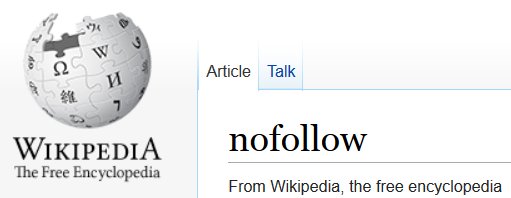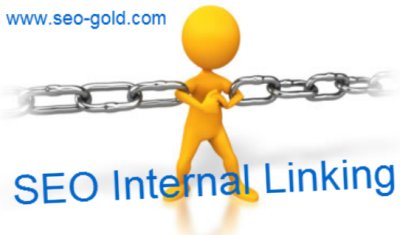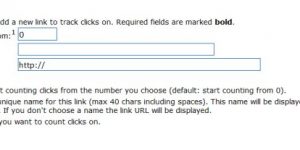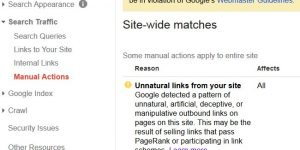SEO Tips Internal Linking Structure updated June 2014.
Been following a thread in the newsgroup alt.internet.search-engines called Crit My SEO :-) The alt.internet.search-engines newsgroup used to be the place to be for discussing the latest SEO techniques, in 2014 it’s dead.
Checked a few of the latest articles and found one I’d responded to (I posted under the name: SEO Dave) in 2004 called “Title tag maximum length?”!!!
As normal turned into a flame war and so the Internal Linking Structure vs Outbound Linking Structure discussion was lost, but it inspired an SEO article regarding backlinks and internal PageRank sculpting.
PageRank Sculpting Using Internal Nofollow Links
The OP asks about PageRank sculpting using internal nofollow links:
I’m trying for a more Wikipedia style link structure and have rel nofollow loads of internal links to keep link juice flow controlled. anyone got any thoughts
Stacey from Jezsta SEO Services made this good point:
So you think your internal links are crap and not worth going to? Why would you do that? PR sculpting reasons? I suppose you haven’t heard the latest that links that are related count real nicely as weighted text on your pages. You need outgoing links that are related to help your SEO relevance also. The only things you should nofollow are maybe affiliate links and sites that are unrelated or not really needing the link per se.
SEO update 2014: at the time of writing the above was pretty much true, today nofollow links delete the link benefit/PageRank that nofollow used to conserve. Currently you should avoid using rel=”nofollow” for any links, especially internal links (that’s SEO nuts, deleting internal link benefit!).
Only to be attacked over and over again by a so called SEO web expert who thinks linking out is bad and shouldn’t even be discussed!
Wikipedia Links SEO Linking Structure
Last time I checked Wikipedia has loads on internal links and quite a lot of outbound links, though for quite sometime now they have rel=”nofollow” the external links to help prevent link SPAM. Wasn’t always like this, recall them adding nofollow then removing nofollow only to re add it later (in 2014 Wikipedia uses nofollow on external links)!
During all this time whether nofollow or do follow links, Wikipedia has done well in Google SERPs so it’s doing something right with it’s SEO: lots of backlinks (high PR) and loads of content.
SEO Internal Linking Structure
Many of my web sites have lots of internal links like https://free-recipes.co.uk/ a Free Recipes site which only uses internal linking mainly because I only had one recipe site like this, if I had more I’d link them together (though not like a link farm). Finally got around to updating this site, upgraded to using WordPress as the backend and added around 65,000 recipes.
Now that it uses WordPress I was able to very easily automatically internally link around 300 relevant keywords: whenever a keyword is found for the first time on a page within the main content it’s turned into an internal text link using the keyword replaced (used the same concept on this site so some internal links in this post were automated at one time).
Planned to add a couple of hundred more internal linked keywords like this long term because linking (internal and outbound) increases Google rankings a lot due to Google giving the anchor text of links on a page more weight than standard body text (also the links help the page they link to as well).
What this means is if you have a page about Internal Linking you should link from it with the anchor text:
Internal Linking
Internal
Linking
Internal Link
Internal Links
Link
Links
Note semantically related keywords like Link and Links help with Linking SERPs.
But not only that you also want related phrases for that page to do well, so you might want SERPs like-
Google Internal Linking
Outbound Links SEO
Internal Linking Structure
etc…
And so having the keywords Google and Outbound as anchor text will help with these related SERPs and other semantic keyphrases.
Update 2014: I no longer tend to use automated WordPress plugins for internal linking, see later regarding siloing or theming your internal links. The WordPress internal linking plugins tend to use a lot of server resources as well and with Google taking page speed (how fast a page loads) into account we have to think long and hard before using a feature that slows a site down. So SEO 2014 is yes freely link to related internal pages, but take siloing/theming into account for maximum SEO results, to achieve this I’m afraid it’s a manual process.
Outbound Links
I don’t like linking out freely to related websites I don’t own since it gives that website a boost as well and I’m not one for helping the competition for free :-) Would be very easy to search Google for something like “Internal Linking Structure” and link to the top result and it would help this page with that SERP, but it also helps the top site I’m linking to (sends them link benefit/PR and anchor text benefit).
Why would I help a website I want to beat in the SERPs?
I try to link to my own pages with relevant keywords first and link conservatively to other related web sites, if I had to link to related sites I don’t own I certainly won’t link to the ones ranked at number 1 to 10 in the relevant SERPs.
For example I have multiple websites that cover SEO to some degree and so makes sense to link those together. They all do well for relevant SERPs and you’ll find I try to link relevant content together, but with external websites you have to be careful, can’t freely interlink two of my domains with hundreds of relevant backlinks (one of the reasons why I’m combining most of my SEO websites into one larger SEO website: this one).
The easiest way to link two related websites together are by adding a sitewide link from a footer or something and many years ago this worked really well, but today (SEO 2014) this is a bad idea. I’ve had sites penalized by Google for too many sitewide links even when I had no control over the backlinks: sold a WordPress theme with a footer link, resulted in over 2,000,000+ backlinks (according to Google Webmaster Tools) and the websites been penalized by Google (had the warning emails from Google etc… and the PR0 sitewide).
Not saying never add sitewide links, but don’t go for sitewide backlinks as a matter of course, especially if you own the domains: looks like a link farm.
What I do in 2014 is like you see with the link within this article, add a very small number of relevant outbound/external links (used to have one on this article, moved the article to the domain it was linking to, so now it’s an internal link :-)). I could easily add 50 links from this article to other SEO articles on my other SEO sites, but this would be way too much. Even adding three external links (to my own websites) from every article would be risky, there’s around 25 articles on this website (in February 2014 thiw was on my old SEO Gold site), adding three links from each article would be 75 links to my own sites, that’s looking a lot like a link farm especially if some of those articles links back (which they would), which is why there’s only one relevant external link to one of my sites from this article.
Now scale this up to 500 article sites, even 1 external links per article is 500 external links, even if you have 5 related sites linking together and only link 1 in 5 article to a particular site it’s 100 links and because you’ll be interlinking sites it could look like a link farm despite being careful.
Don’t put any limits on internal linking per se, I wouldn’t recommended linking every instance of a keyword to an internal article, for example I could install a WordPress plugin that would link every instance of the phrase “SEO Tutorial” to the internal article SEO Tutorial (similar to what Wikipedia does with internal links) and it won’t cause any harm per se**.
However Google only counts the anchor text of the first unique link, so only the first link to the SEO Tutorial article from any page of this site will pass anchor text benefit. Since there’s an internal sitewide link to the SEO tutorial article on the right sidebar (internal sitewide links are fine) the above link adds no SEO value. From a purely SEO perspective one internal link is all you need: UNLESS you use an SEO technique so more than one links anchor text is counted, hover over the tutorial link and note the URL ends in #internal-link, if you add “#anythinghere” to a URL Google will count the anchor text even if there’s multiple links to the same webpage- have this as an advanced SEO feature in the SEO package I develop.
Siloing Internal Links
** Although it doesn’t cause SEO harm if you do internally link automatically and freely if you start to link single keywords you’ll find any potential SEO benefit from siloing internal links is lost. Siloing links means ONLY linking to the same niche, so link theming would be on a website with no distinct niche would be categorizing parts of the site and only linking internally within those distinct themed categories.
An example might be a site with two niches, one on Making Money Online and the other Search Engine Optimization, articles about making money online would tend to internally link to other articles on making money online and articles about search engine optimization would tend to link to other articles about search engine optimization. By siloing or theming the internal links each niche is strengthened SEO wise.
This website has a make money online section, even though I’m writing about make money online (sort of) above I would avoid linking this SEO article to the make money online articles. This would be difficult to achieve with automated WordPress internal linking plugins since some of the text above matches the make money online keyphrases you’d likely automatically linked.
Nofollow and Outbound Links
Note: Google changed how it treats nofollow since I wrote this article (everything else in the article is still true or has been edited several times: think I started this SEO article 10 years ago!) nofollow now (2010: still true in 2014) damages a sites SEO quite badly. When nofollow was first introduced by the major search engines nofollow links would pass no link benefit/PR and the links benefit that would have passed through the nofollow links was shared between the do-follow links (internal and external). Currently Google DELETES the link benefit of nofollow links, making nofollow one of the worst possible things you can have on a website SEO wise!!
Like I said I don’t like linking to sites I don’t own (selfish that way), but you can still benefit from the anchor text of outbound links without having to use PR on them. If you view source of this page you’ll see all the Google search links are rel=nofollow (not wasting PR/link benefit on a Google search!).
The Google search result below helps show that nofollow links can still help the page they are on due to the anchor text (it’s not ignored by Google).
http://www.google.co.uk/search?num=30&hl=en&rlz=1T4HPEA_en-GBGB242GB242&q=%22Dictionary+of+the+History+of+Ideas%3A+Classicism+in+Literature%22+&btnG=Search
You’ll note the word ideas is used once on the Wikipedia page that’s number 1 for the above SERP and is part of a nofollow outgoing text link (under the External Links section). Classicism is used once on the page and is used as normal text. Basically there is only one place on the page where you’ll find this exact text, here’s the code from view source:
<li><a rel="nofollow" class="external text" href="http://etext.lib.virginia.edu/cgi-local/DHI/dhi.cgi?id=dv1-55"><i>Dictionary of the History of Ideas</i>:</a> Classicism in Literature</li>
Google has used the anchor text from a nofollow text link and associated text to rank that page for this highly specific search.
This means IF you added dozens of outbound links to relevant sites, but nofollow them you would at least gain the benefit from the anchor text of the nofollow outbound links with out the PR cost of an outbound link.
Note SEO 2014: nofollow currently deletes the link benefit, so although this SEO technique would in theory work it’s deleting link benefit, so don’t use it.
This does not prove the nofollow anchor text gains the same weight as anchor text of a link without rel=nofollow (haven’t been able to determine a test that shows conclusively either way). For now we can be sure the anchor text of nofollow links is NOT ignored by Google for ranking purposes and MAY be given the same weight as a normal text link.
Personally I find using nofollow this way steps into the black hat SEO or at least greyhat SEO arena and so something I’d not do excessively. The risk of using links this way has got to be very low since sites like Wikipedia do well that way, so would be a bit hypocritical of Google to ban sites for this type of SEO. Wikipedia has an army of moderators, they could have do follow links if they feel the external links they link to are worth linking to: it’s lazy link SPAM fighting.
You’ve also got 90%+ of blogs using this technique on comments, most blogging platforms like WordPress and BlogSpot now automatically nofollow all links added to comments. So pretty obvious Google can’t automatically penalize sites for excessive nofollow use.
That said use rel=nofollow on outbound links with care, a Google manual review of a site with hundreds of nofollow links that are clearly added by the site owner may not get by their quality guidelines. It’s one thing having links added by anonymous posters to Wikipedia and blog comments being nofollow by default and a webmaster adding them to their own content for ranking purposes.
Google also states the anchor text of nofollow links is ignored, clearly they are wrong as otherwise we wouldn’t find results like the one above. I’m going to assume since Google passes no link benefit through a nofollow link it also won’t pass true anchor text benefit to the page the link is on, going to assume it counts the anchor text of nofollow links as normal body text. Since SEO 2014 state of nofollow is the PR is deleted, I’m never going to use nofollow for anything anyway, so for me the SEO discussion is academic only and should be for you as well.
David Law




HTML 2.0 SEO
Right now the HOT SEO for Google is Retro SEO using HTML 2.0! Be there or be square!
Off Site SEO
very useful articles….. I think seo off site more important and power full for getting free traffic than seo on site, I already implemented for my web…… so I am focus on off site optimisation…
thanks
Wikipedia Style Internal Linking SEO Value
first of all what you write is absolutely true in my opinion. we experienced the same SEO boost when the site is structured like Wikipedia with heavy internal interlinking.
i disagree on the outbound linking: linking to your competitors does count and boosts your site too (it may sound stupid but it has been working for years this trick)
Google Deletes Nofollow Links PR
Dave, is this material some obsolete since I read on your other sites that google changed the way of treating nofollow links? If I got you right now google just deletes the link benefits of nofollow link.
That is as if the pr points connected to the link just vanish in the black hole. Just like competitor doesn’t get it but you loose it. Am I right?
Google Deletes Nofollow Links PR
Google Deletes Nofollow Link Benefit : DO NOT USE NOFOLLOW
Yes the nofollow information in the SEO article above was out of date (so many SEO sites to manage, so little time to check them :-))
Thanks for the heads up, I’ve added an update on Google deleting the link benefit of nofollow links above.
I still have nofollow links on some of my sites I’ve not got around to changing yet as well and I’ve known about the nofollow problem for well over a year.
Does send a shot across the bow of those reading SEO advice on forums and websites, Google changes the rules on a regular basis so try to keep up to date on the latest SEO news and views. I try to keep my SEO tutorials up to date, but with so many websites to manage it’s easy to forget about an SEO article like this one that didn’t specifically target nofollow SEO advice originally.
David
Google Deletes Nofollow Link Benefit : DO NOT USE NOFOLLOW
Blackhat SEO NoFollow Affiliate Links?
I just bought a Warrior Special Offers on the Warrior forum from someone who is teaching how to make certain affiliate websites. He teaches to put nofollow on all of the posts you put up.
Now I’m probably going to go to all my posts that I made with this method and take the NoFollow affiliate links out.
Something about it didn’t seem right to me anyway.
Blackhat SEO NoFollow Affiliate Links?
Wikipedia Links SEO Linking Structure
Since Wikipedia put a lot of internal links on it’s every page, I’ve been doing the same thing..